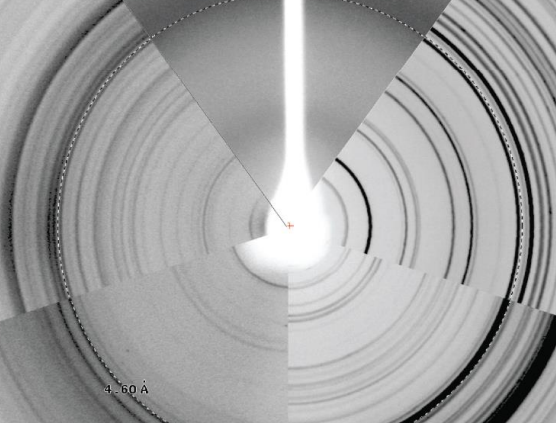Low-complexity domains adhere by reversible amyloid-like interactions between kinked β-sheets
Control of metabolism by compartmentation is a widespread feature of higher cells. Recent studies have focused on dynamic intracellular bodies such as stress granules, P-bodies, nucleoli, and metabolic puncta. These bodies appear as separate phases, some containing reversible, amyloid-like fibrils formed by interactions of low-complexity protein domains. Here we report five atomic structures of segments of low-complexity domains from granule-forming proteins, one determined to 1.1 Å resolution by micro-electron diffraction. Four of these interacting protein segments show common characteristics, all in contrast to pathogenic amyloid: kinked peptide backbones, small surface areas of interaction, and predominate attractions between aromatic side-chains. By computationally threading the human proteome on three of our kinked structures, we identified hundreds of low-complexity segments potentially capable of forming such reversible interactions. These segments are found in proteins as diverse as RNA binders, nuclear pore proteins, keratins, and cornified envelope proteins, consistent with the capacity of cells to form a wide variety of dynamic intracellular bodies.
https://www.ncbi.nlm.nih.gov/pubmed/29439243




